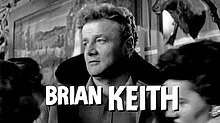Jan. 5 - Looking for Richard (1996), directed by Al Pacino. This documentary follows Al Pacino, along with his hilarious colleague Frederic Kimball, who, over the course of several years, attempts a sort of quasi-dramatization of Shakespeare's Richard III, all while filming behind the scenes of the production, and his efforts to get at the heart of Shakespeare's words, and make them palatable to a modern audience. Amusing, intellectually engaging, and a great excuse to break out your dusty old "Collected Works of Shakespeare."
More than anything, this made me want to see a full length, big budget of Richard III starring Pacino and his assembled actors. The staging of the murder scene between Alec Baldwin (as George, Duke of Clarence) and the two actors playing the men sent to kill him is better than the equivalent scenes in the Olivier and McKellen/Loncraine versions, and Pacino looks like he could rival both Englishman for his portrayal of the skulking, scheming hunchbacked monarch -- with his macho, Tony Montana-esque aggressive Richard, who bears his open, hairy chest to a young Winona Ryder as Lady Anne, standing as a nice comparison to Olivier's fey plotter and McKellen's self-amused crook.
Jan. 6 - 5 Against the House (1955), directed by Phil Karlson. An interesting film noir from the tail-end of the original cycle. A group of college students hatch upon a plan to take a Reno casino's nightly earnings for themselves; things, as they say, do not quite go as planned. Interesting tone here: begins rather comedic, seeming almost like a 1950s Hangover-style romp, gradually gets darker and more dramatic until a finale that is both unintentionally (or perhaps intentionally?) absurd and strangely sentimental and happy for a noir. Brian Keith, as a Korean War hero using the G.I. Bill to attend a midwestern university actually named Midwestern University, gives the film's best, most realized performance by playing a man who is simultaneous angered from being left out of the post-war prosperity he thought he was promised, as well as feeling nostalgic for the thrilling rush of war.
On a mostly irrelevant note, Keith, who was about 33 during filming, looks old as shit, pardon my crudity. And this isn't just a "people looked older back then" issue: he genuinely looks 50. He's only a few months older than his co-star Guy Madison -- and yet when Madison's character, early on in the film, jokes that Keith is his father, I actually believed him for a moment.
 Anyways, like I mentioned above, there are some very odd touches to this film. Comedy runs pretty rampant for the first half hour or so, and not just any comedy, but midcentury campus comedy, one of the most specific and dated brands of comedy there is. Future Green Acres player Alvy Moore is one of Keith and Madison's roommates, and basically is doing a nightclub comedy routine for the duration of the film, even looking straight at the camera to deliver a joke at one point.
Anyways, like I mentioned above, there are some very odd touches to this film. Comedy runs pretty rampant for the first half hour or so, and not just any comedy, but midcentury campus comedy, one of the most specific and dated brands of comedy there is. Future Green Acres player Alvy Moore is one of Keith and Madison's roommates, and basically is doing a nightclub comedy routine for the duration of the film, even looking straight at the camera to deliver a joke at one point.The film's bizarre climax is Keith and his cohorts, dressed in false prospector beards and cheap cowboy costumes, robbing the casino by convincing a guard that there is an armed, disgruntled dwarf crouching inside of a cart that actually contains a pre-taped recording. Did western stalwart Karlson grow tired of the modern trappings and decide to do a full-on "showdown in the desert" for the finale? I honestly couldn't say. It really must be seen to be believed.
Jan. 7 - Shoot the Piano Player (1960), directed by Francois Truffaut.
One of the reasons I started this project was to get caught up on the agreed-upon world classics that I remain woefully behind on. This, I am both proud and somewhat ashamed to say, is one of them. One of the things that makes this film somewhat difficult to write about is that it is, in my eyes, a willfully loose and disorganized film, a film that has no wish to present a unified whole or a fully coherent overarching message. And that's it's greatest strength! So many colorful shadings, so many interesting dead ends and detours. From the bouncing ball 'translating' a barroom singer's drunkenly delivered singalong, to an actual cutaway showing someone's mother dropping dead when a liar says "Or may my mother drop dead," this film is as replete with fun diversions and clever shakings-up of the cinematic form as Godard's near contemporaneous Band of Outsiders.
Truffaut's use of voiceover narration is particularly interesting. While at times lead actor Charles Aznavour's narration does the typical "explaining possibly inexplicable character actions" thing, just as often it seems to advise him to do the opposite of what he is about to do, creating a strange and fascinating aspect of the film: is Truffaut suggesting a thematic "mind-body" split, or just having fun with hoary old noir tropes? I don't know, and I'm looking forward to repeat viewings to try and either figure it out or embrace the mystery.
No comments:
Post a Comment